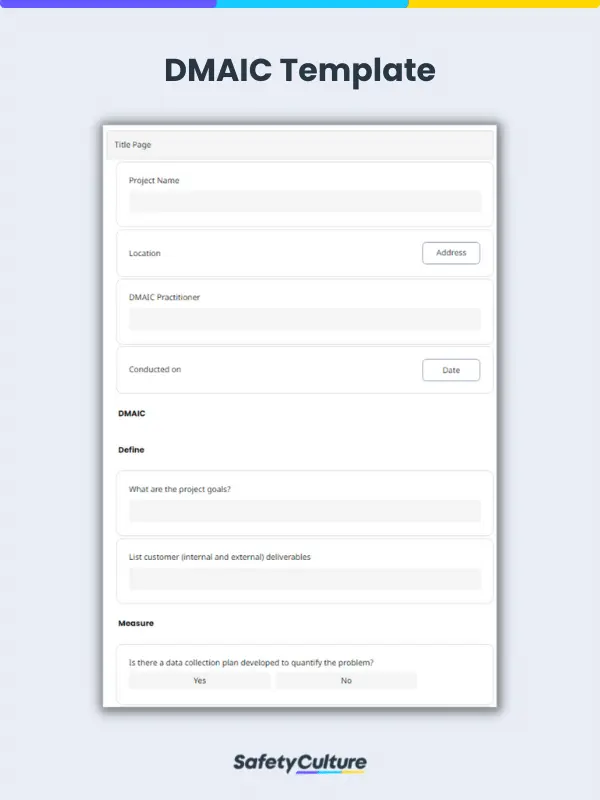What is Six Sigma?
Six Sigma is an organizational cycle that measures the highest quality of work. It aims to maintain a highly effective and efficient production and administration system which includes operations, purchasing, human resources, and customer services. Six Sigma gauges efficiency and excellence in every process which applies a data-driven approach and methodology in removing errors and defects to solve a problem.
Benefits of Six Sigma Implementation
As a process improvement technique that involves the application of methods and tools in order to come up with ways to continuously improve processes, practicing Six Sigma can help reach near-perfect output with defects allowed to only 3.4 per million opportunities.
Moreover, applying Six Sigma in a business helps the organization gain control of the quality of its processes by implementing a measurable approach to identifying causes of defects and coming up with solutions to reduce output variation. This in turn leads to the creation of new and improved quality of products and services, increase in profit, and boost in employee morale.
Importance of Six Sigma in the Workplace
Six Sigma has been widely used in different industries. It helps organizations to implement process improvement and techniques to achieve the following:
Eliminate waste
Waste is anything that is irrelevant to your organization. Eliminating wastes can simplify your process to achieve consistency in delivering products or services. Six Sigma focuses on needs and demand to achieve efficiency and improve production timeline.
For example:
In a manufacturing site, all employees start their work at 7:00 am. Team B is idle while waiting for team A to finish their process before starting their task. Team B’s idle time is an example of waste.
Reduce errors and defects
Reducing errors and defects are the primary concern of six sigma. To achieve 100% of quality, facilities and equipment should be maintained regularly to ensure they are operational to prevent recurring issues. This also includes identifying human and process errors to address areas for improvement.
For example:
In the manufacturing industry, quality assurance teams should do the final checks of finished products to identify defect or damages before it went out for delivery.
Streamline processes
Six Sigma helps to document all aspects including employee profile, production processes, problems identified, effective solutions, and implementation of corrective actions. It helps to eliminate unwanted costs and the repetition of work.
For example:
In an organization, proper task allocation should depend on the role of an employee. It should be based on employees’ skills, training acquired, and level of knowledge.
What are the Six Sigma Methodologies?
While Six Sigma experts and consultants have come up with their own methodologies for implementing Six Sigma in different organizations and industries, as well as learning how to use it with different matrices such as a prioritization matrix, DMAIC and DMADV are the two methodologies of Six Sigma that are most widely used.
DMAIC
An acronym that stands for Define, Measure, Analyze, Improve, and Control, DMAIC is a rigorous quantitative method for process improvement. A Six Sigma method that is best applicable for the improvement of existing processes or products, DMAIC is intended for processes or output that may be performing below expectations or specifications and are determined to benefit the most from incremental improvement.
DMADV
DMADV is a Six Sigma method that stands for Define, Measure, Analyze, Design, and Verify. DMADV follows the first three steps as DMAIC only that the last two steps are specific for the intent of redesigning or creating new processes, products, or services.
What is the Difference Between DMAIC and DMADV?
To further differentiate between DMAIC and DMADV, here are descriptions for each acronym:
DMAIC |
DMADV |
| Define – Identify and define the problem that Six Sigma is trying to solve | Define – Define the customer needs |
| Measure – Identify the metrics or measurable aspects of the process or product | Measure – Identify product capability and specifications based on what the customer needs |
| Analyze – Conduct rigorous analysis of data to uncover areas for improvement or causes of defects | Analyze – Determine how the product or process can achieve the desired specifications |
| Improve – Improve the existing process, product, or service | Design – The second D in DMADV, design the process, product, or service based on the data analyzed |
| Control – Set specific steps to follow in order to produce and replicate the expected results | Verify – Verify that the output is indeed performing or meeting the specifications and customer requirements |
Six Sigma Management Tools
Each step of the DMAIC and DMADV methodologies will entail the need to utilize some or a combination of Six Sigma management tools. Here are some of the most popular Six Sigma management tools you can use according to the needs of your business:
FMEA Template
FMEA stands for Failure Mode and Effects Analysis and it is a systematic method of anticipating potential failures in business processes and mitigating their impact on customers. Use this FMEA template when improving existing process, product, or service using the DMAIC method and identify potential problems in order to prevent potential adverse effects on customers. FMEA usually starts with a brainstorming session of an experienced team and concludes with a re-analysis of risks after corrective actions have been applied. Empower the team to easily describe the process function, identify the mechanism of failure, and determine the risk priority number (RPN).
DMAIC Template
This DMAIC template can help as a guide in applying the DMAIC methodology as a root-cause analysis for process improvement. Use this DMAIC template to perform the following:
- Define the project goals;
- measure and record the the current performance of the process or product in order to quantify the problem;
- analyze the data until the root cause has been identified;
- improve the process or design with the intent to address the defects or areas for improvement; and
- specify the monitoring and control systems to produce and replicate the desired results.
Root Cause Analysis (RCA) Template
Used in the analysis step of Six Sigma methodologies, Root Cause Analysis (RCA) is an approach in analyzing an identified problem and eliminating its root cause. RCA can help ensure the prevention of recurring problems, aiding in the improvement of business processes. Use this RCA template to analyze a recurring problem and help eliminate the root causes.
5 Whys Template
Use this 5 whys template designed to make it easier to uncover the very root cause of a problem by drilling down and asking the question “why?” until all logical questions are answered and the real cause of the problem is realized. Once the cause is identified Six Sigma experts can then formulate solutions that intend to prevent the same issues from recurring.
Kaizen Report Template
Use this kaizen report template to integrate the lean approach to your Six Sigma methodology. Define the project, select the category, uncover the root cause of the problem through RCA, and identify the improvement measures.
SIPOC Template
SIPOC or Suppliers, Inputs, Process, Outputs and Customer is a tool used to summarize and illustrate the end-to-end process of specific business functions and operations. Some use the opposite, COPIS, in which the customer is put first in the diagram. Use this SIPOC template to summarize all the processes involved in the creation of an output and utilize the information as a reference during brainstorming sessions for finding ways to improve or redesigning processes and products
How to Achieve Six Sigma Certification for your Workplace
Six Sigma highlights the statistical analysis of process improvements for your organization and is facilitated by six sigma professionals. The following methods are essential to help your organization prepare for Six Sigma certification:
Use DMAIC methodology
The DMAIC methodology is an in-depth process that Defines a problem, Measure its performance, Analyze the root cause of existing defects, Improves the identified process, and Controls the future performance. DMAIC is the most widely used methodology in Six Sigma which helps to improve, optimize and stabilize business processes and designs.
Integrate Lean
A lean approach is an effective way to reduce waste which includes defects, overproduction, low-quality products, and unproductive processes. It promotes work standardization and streamlines production processes. There are effective tools such as 5S, kaizen, Quality Function Deployment (QFD), and FMEA that can be used to eliminate defects.
Utilize Technology
Preparing for Six Sigma certification is not easy. It involves a lot of documentation, analysis, and recordkeeping which is burdensome for six sigma practitioners. Using a pen and paper to collect data and reinput everything on a computer is a repetitive process and time-consuming. A mobile inspection app like SafetyCulture (formerly iAuditor) can help you track process improvement and identify waste and defects easily. With SafetyCulture you can:
- Create visual six sigma PDF reports by capturing damages and defects using a handheld device.
- Easily implement and monitor continuous improvement efforts.
- Immediately assign corrective actions to other teams for urgent issues.
- Receive real-time status updates and share six sigma reports to members of your organization.
- Save online reports using SafetyCulture’s unlimited cloud storage and access data anytime, anywhere.



